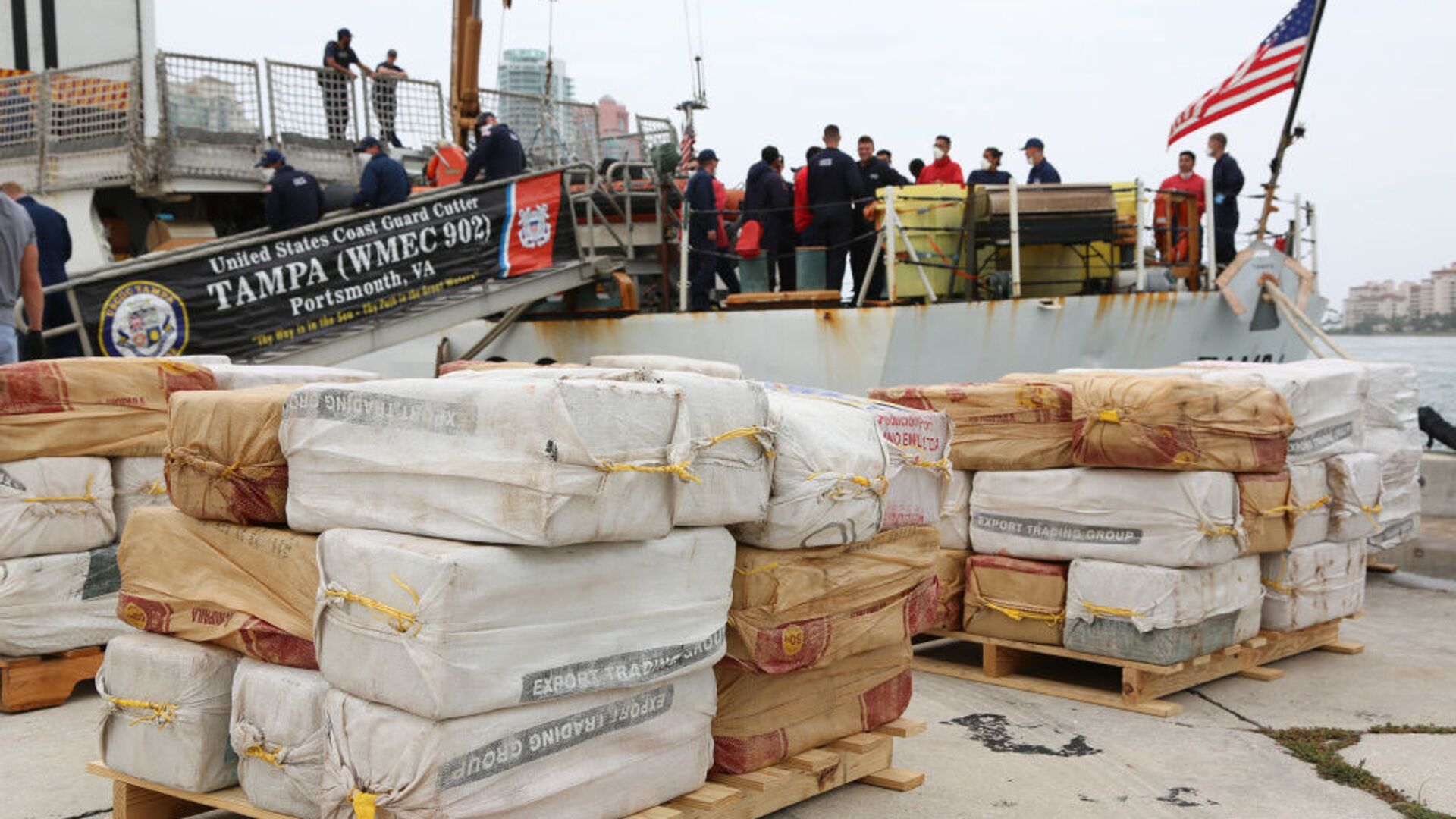https://sputnikglobe.com/20230316/un-office-on-drugs-and-crime-says-global-supply-of-cocaine-at-record-levels-1108485715.html
UN Office on Drugs and Crime Says Global Supply of Cocaine at Record Levels
UN Office on Drugs and Crime Says Global Supply of Cocaine at Record Levels
Sputnik International
Global production of cocaine has increased over the past two years, with global supply of cocaine currently being at record levels, the UN Office on Drugs and Crime said on Thursday in the Global Report on Cocaine 2023.
2023-03-16T23:34+0000
2023-03-16T23:34+0000
2023-03-16T23:34+0000
world
un office on drugs and crime
united nations office on drugs and crime
coca
coca leaf
cocaine
cocaine
covid-19
https://cdn1.img.sputnikglobe.com/img/07e5/04/15/1082696362_0:52:1000:615_1920x0_80_0_0_c0692a6e6966abf2d4f96f7ffa1afb54.jpg
According to the report, some 2,000 tonnes of cocaine was produced in 2020 following a dramatic increase in manufacture since 2014, "when the total was less than half of today’s levels." The report specified that the expansion of coca cultivation doubled between 2013 and 2018, was the highest in 2018, and started to rise sharply in 2021. At the same time, interceptions of cocaine shipments by law enforcement bodies around the world has also increased, with seizures reaching a record high of some 2,000 tonnes in 2021 only.Moreover, "there has been a continuing growth in demand, with most regions showing steadily rising numbers of users over the past decade," the office said, adding that "while the cocaine market remains quite concentrated in the Americas and parts of Europe," there is "a strong potential for a large expansion in Africa and Asia." The report examined the emergence of new hubs for cocaine trafficking and noted that Southeastern Europe and Africa "are increasingly being used as key transit zones for the drug."The report also examined the affect of the Ukraine conflict on routes and cocaine consumption patterns, saying that "there is evidence that foreign criminal groups have used Ukraine’s ports as a way of avoiding law enforcement controls in Western Europe." The office believes that criminal groups trafficking cocaine will also shift their activities s to other Black Sea ports in Romania or Bulgaria.
Sputnik International
feedback@sputniknews.com
+74956456601
MIA „Rossiya Segodnya“
2023
Sputnik International
feedback@sputniknews.com
+74956456601
MIA „Rossiya Segodnya“
News
en_EN
Sputnik International
feedback@sputniknews.com
+74956456601
MIA „Rossiya Segodnya“
Sputnik International
feedback@sputniknews.com
+74956456601
MIA „Rossiya Segodnya“
un, un office on drugs and crime, global report on cocaine 2023, global supply of cocaine, ukraine cocaine, coca cultivation, cocaine supply expansion, how did covid impacted cocaine, how criminals use ukraine ports to smuggle cocaine, trafficking cocaine, cocaine traffic
un, un office on drugs and crime, global report on cocaine 2023, global supply of cocaine, ukraine cocaine, coca cultivation, cocaine supply expansion, how did covid impacted cocaine, how criminals use ukraine ports to smuggle cocaine, trafficking cocaine, cocaine traffic
UN Office on Drugs and Crime Says Global Supply of Cocaine at Record Levels
MOSCOW (Sputnik) - Global production of cocaine has dramatically increased over the past two years following a decrease during the COVID-19 pandemic, with global supply of cocaine currently being at record levels, the UN Office on Drugs and Crime said on Thursday in the Global Report on Cocaine 2023.
"Global production of cocaine has jumped dramatically over the past two years following an initial slowdown caused by the COVID-19 pandemic ... Coca cultivation soared 35 per cent from 2020 to 2021, a record high and the sharpest year-to-year increase since 2016. The rise is a result of both an expansion in coca bush cultivation and improvements in the process of converting coca bush to cocaine hydrochloride," the office said.
According to the report, some 2,000 tonnes of cocaine was produced in 2020 following a dramatic increase in manufacture since 2014, "when the total was less than half of today’s levels." The report specified that the expansion of coca cultivation doubled between 2013 and 2018, was the highest in 2018, and started to rise sharply in 2021. At the same time, interceptions of cocaine shipments by law enforcement bodies around the world has also increased, with seizures reaching a record high of some 2,000 tonnes in 2021 only.
Moreover, "there has been a continuing growth in demand, with most regions showing steadily rising numbers of users over the past decade," the office said, adding that "while the cocaine market remains quite concentrated in the Americas and parts of Europe," there is "a strong potential for a large expansion in Africa and Asia." The report examined the emergence of new hubs for cocaine trafficking and noted that Southeastern Europe and Africa "are increasingly being used as key transit zones for the drug."
"Ports on the North Sea like Antwerp, Rotterdam, and Hamburg, meanwhile, have eclipsed traditional entry points in Spain and Portugal for cocaine arriving in Western Europe. Traffickers are also diversifying their routes in Central America by sending more and more cocaine to Europe, in addition to North America," the office said.
The report also examined the affect of the Ukraine conflict on routes and cocaine consumption patterns, saying that "there is evidence that foreign criminal groups have used Ukraine’s ports as a way of avoiding law enforcement controls in Western Europe." The office believes that criminal groups trafficking cocaine will also shift their activities s to other Black Sea ports in Romania or Bulgaria.


